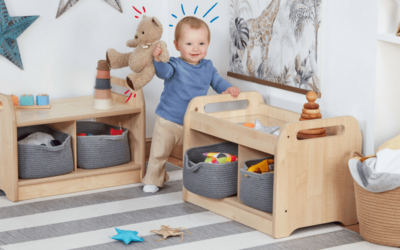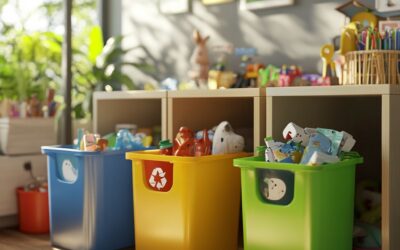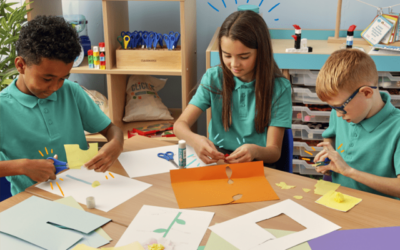Effective early years Numicon activities
Sheila O’Reilly shares with us her favourite Numicon activities for preschool and beyond, as well as explaining why they can be effective.
My name is Sheila and I’m a primary school teacher with twenty years’ experience. I also run the account @rascals_and_rainbows on Instagram, where I often share fun learning activities and play invitations for early years.
I have been using Numicon for many years in the classroom and in recent years at home with my two young children. It is a very effective tool in developing children’s understanding of number, which is such a difficult, abstract concept to teach. Numicon provides children with an image to associate with each number. Children can explore number through the different shapes and colours of the Numicon pieces and how the pieces can fit together to make bigger numbers.
Effective activities with Numicon:
When first introducing Numicon to young children (nursery/preschool age) the emphasis is not on number but rather on becoming familiar with the shape and colour of the pieces. I don’t tell my pupils what number each piece represents, I allow them to explore, make observations and discover for themselves. I often place Numicon pieces in trays of sand, water/water beads (even slime!) and allow children opportunities to play with the pieces. I’ve also used play dough with Numicon. It can be very enlightening to observe their play. Some children will automatically begin to stack pieces, others slot pieces together like a jigsaw and some will order pieces from 1-10/10-1.
A fun activity for early exploration of Numicon pieces is using them with a feely bag. When children are aware of the number values of each piece, they can take turns to choose a piece. They must feel the piece and try to decide which number they have chosen. I would encourage them to put their fingers in the holes to count and feel around the edges to see if the piece has a ‘chimney’ or not (a way of exploring whether the number is odd or even). The feely bag activity could be further developed by working with a partner who asks questions to figure out which piece has been chosen – a great way of developing mathematical language.
Continuing with early years ideas, using base boards and overlays is another wonderful way to play with Numicon and become familiar with the pieces. My almost three-year-old absolutely loves this activity because she can complete it independently. Not only is she familiarising herself with the pieces and exploring patterns and colours she is also developing her fine motor skills by placing each piece correctly on the base board. It is amazing how quickly young children learn what number each piece of Numicon represents. They can begin to see what a number actually looks like and how it compares to other numbers.
Balancing Numicon
Numicon is ideal for exploring and comparing numbers. A fun activity to explore equivalence of number is using balance scales. Each Numicon piece is weighted so that a ten piece will weigh the same as two five pieces or a seven piece and three piece. This activity is a great way of exploring number bonds. As with all learning, the wider the variety of ways to teach the same concept the better!
When we explore number bonds, I initially provide the children with opportunities to stack pieces on top of each other to make numbers. They can come up with a wide variety of number sentences using 2, 3 or 4 numbers to make the total. Using balance scales is another way to explain number equivalence. Children can physically place Numicon pieces on each side of the scales to see if they balance and are therefore equal. The multi-sensory nature of Numicon makes it an effective resource for both visual and kinaesthetic learners. This activity has been most effective in developing my daughters understanding of number bonds and the relationship between numbers.
Odd and even
The Numicon shapes make learning about odd and even numbers very easy from an early age. Without even realising it my youngest daughter has sorted the pieces into odd and even, matching up the pieces with/without chimney tops. When I explore the concept of odd and even in class, I use the giant Numicon pieces. We talk about how the Numicon pieces are made with pairs and identify the pieces that have an extra part with no partner (children often refer to this as the chimney). We explore how even number pieces can be cut in half; and we count the number of circles in each half, thus linking the concept of doubling and halving numbers.
Children are always amazed when they make the discovery that two odd numbers will always make an even number! I have yet to tell pupils this fact as someone always discovers it through their play with the Numicon pieces! In teaching about odd and even, I use resources such as the ladybugs counting kit. I encourage the children to practise counting in twos orally beginning at zero. This helps to identify the even numbers. The children use their Numicon pieces to match the ladybirds and number cards. This helps them to quickly identify which numbers are odd and even.
Numicon is such a versatile resource for the early years. However, it can also be used in school right through Foundation Stage, Key Stage 1 and Key Stage 2. It can be used effectively for exploring repeated addition and multiplication/division facts in KS1 and KS2 for example.
As you can tell I’m a huge fan of this wonderful resource and I hope this blog has been helpful in providing some interesting ideas for exploring numbers through Numicon.
If you wish to see more photos of our learning through play activities, follow us on Instagram @hope_earlyyears.
Related blogs
Your Guide to the School-Based Nursery Capital Grant
What is the School-Based Nursery Capital Grant? For schools aiming to enhance their nursery facilities, the School-Based Nursery Capital Grant provides a simple funding solution. This grant is open to eligible state-funded primary schools in England that...
What Goes In, Must Go Out
Creating a Circular Economy in Your Nursery Author: Nick Corlett Sustainability Manager at LEYF Sustainability is more than a trend—it’s a shared responsibility, and the nursery is the perfect place to nurture these skills. Every day...
Top tips to create a SEND-Friendly Primary School Classroom
Author Lindsay Robinson Lindsay Robinson has been a primary school teacher for 23 years and is passionate about achieving the very best outcomes for children through quality first teaching and experiences. I remember receiving very little guidance during my teacher...


